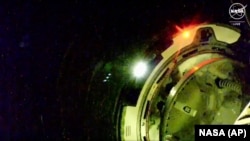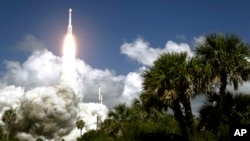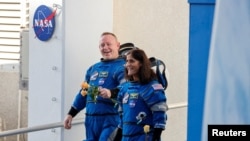Boeing's Starliner spacecraft, carrying crew on board, safely docked at the International Space Station after trouble in the propulsion system and two helium leaks since entering orbit.
While the original docking was scheduled for 12:15 p.m. EST, the spacecraft autonomously docked at 1:34 p.m. EST.
The thrusters of the reaction control system (RCS), which provide nuanced maneuvering ability, were having issues. Butch Wilmore and Suni Williams, the two astronauts on board, were manually piloting the Starliner.
It is currently unclear if the helium leaks and the thruster issues are related.
After years of delays and two failed launches, Starliner lifted off from Florida on Wednesday. Previous setbacks included software that placed the Starliner on a bad trajectory during an uncrewed test, as well as finding flammable electrical tape in the cabin.
NASA and Boeing were aware of one helium leak in a Starliner thruster upon the first failed launch in May.
The teams decided not to repair the leak, stating that testing showed the leak rate to be within safety limits. Repairing the leak would have involved a complicated process with disassembling the Starliner in the factory.
Since beginning the mission, the Starliner has developed two more helium leaks, as posted on the NASA X account.
"Two of the affected helium valves have been closed and the spacecraft remains stable," said the post.
Boeing spokesman Jim May also said that the leaks do not pose a safety concern for the test pilots or the overall mission, stating that the Starliner has helium reserves and that the thrusters will not be needed upon docking at the space station when the propulsion system is disabled.
The helium pressurizes the fuel lines of the thrusters for maneuvering the spacecraft, and engineers created a plan in case of additional leaks. The original leak was likely caused by a small faulty rubber seal.
Butch Wilmore and Suni Williams, the two astronauts on board, are the first crew members to fly on the Starliner.
Boeing and NASA are hoping to add a second provider with SpaceX having regular trips to the space station already. The current trip goes toward the certification process for Boeing. This is also the sixth type of spacecraft built by the United States flying NASA astronauts.
Some information is from Agence France Presse and The Associated Press.











